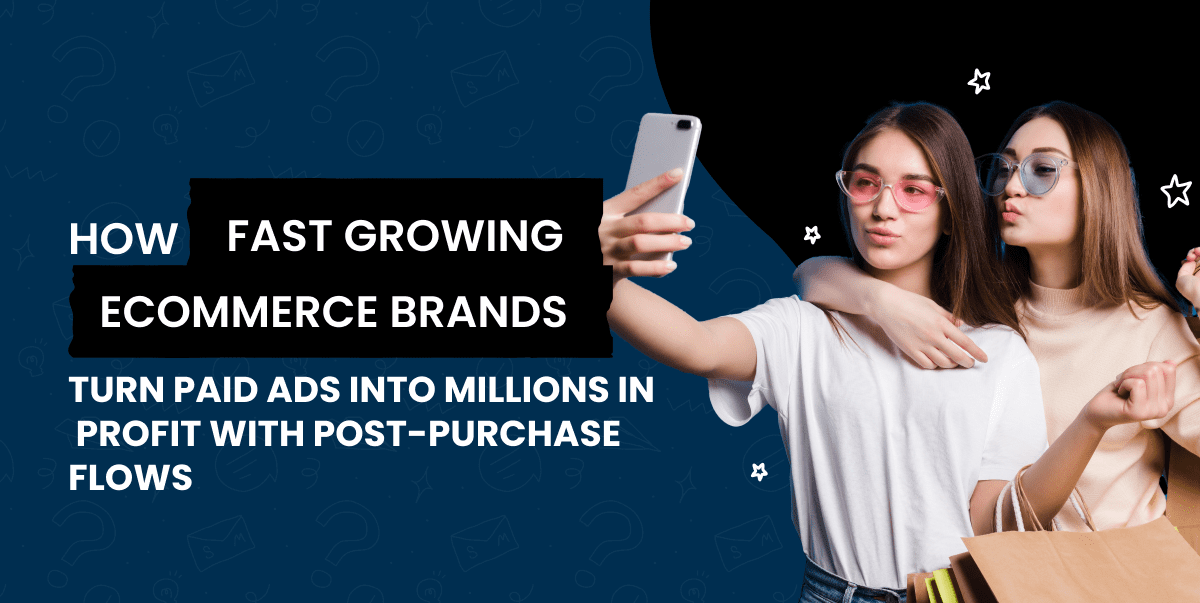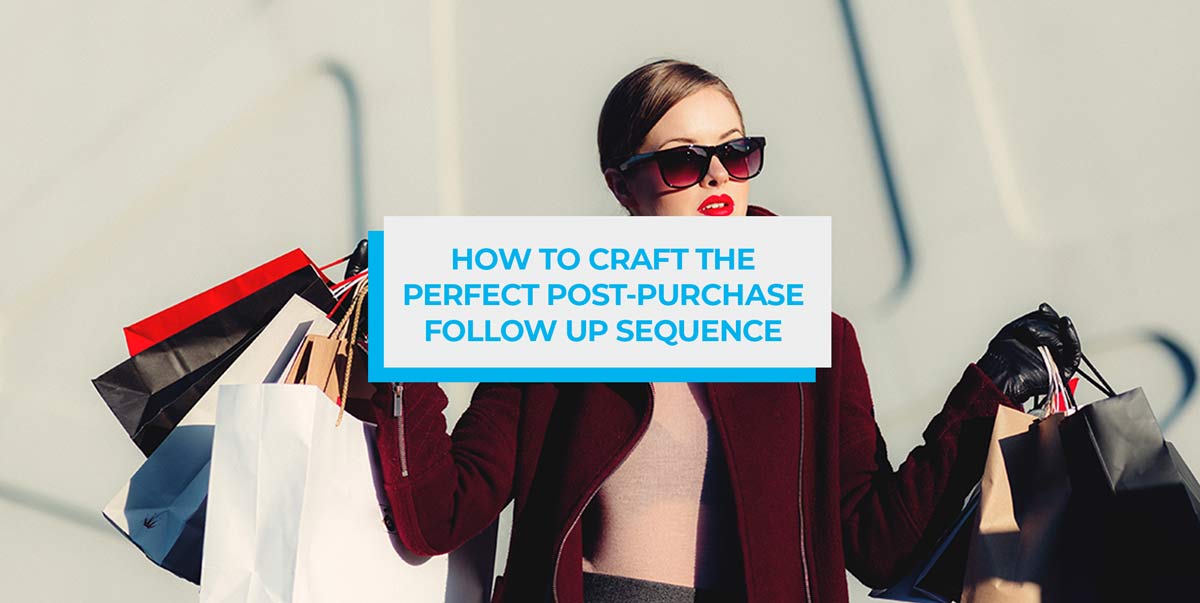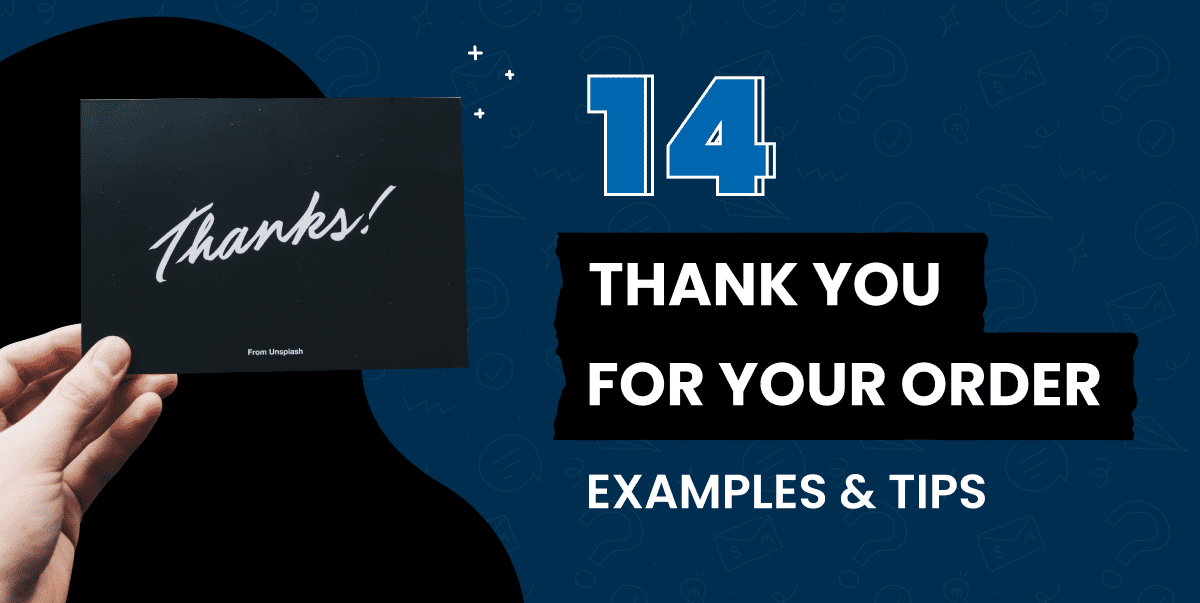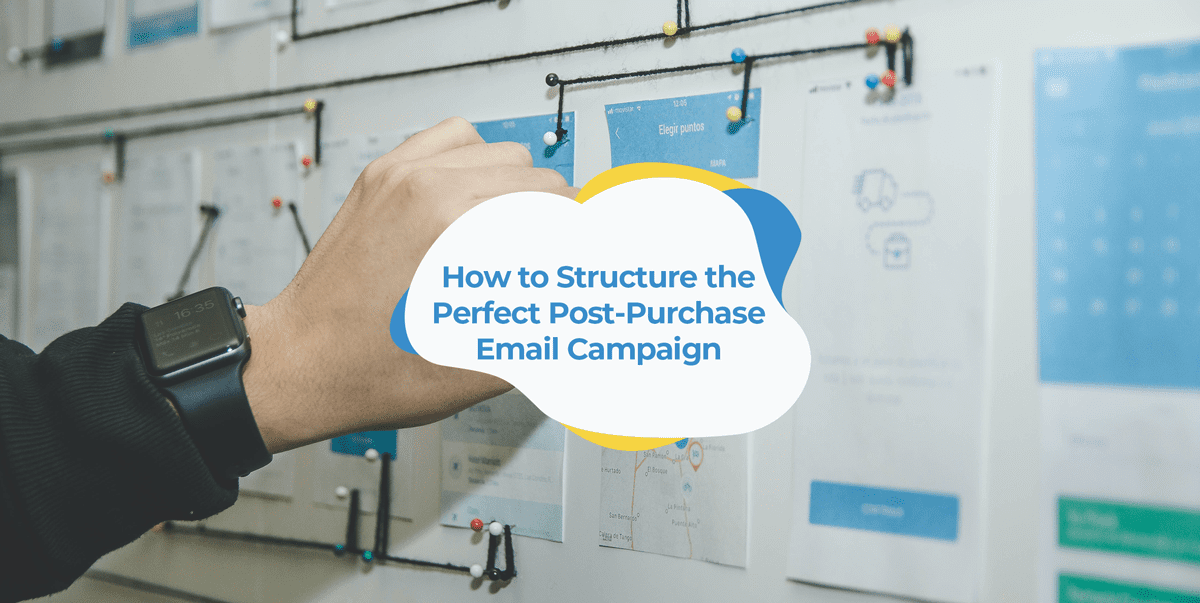Creating fantastic post purchase emails can set you apart from your competition.
Quite a lot separates the top-performing ecommerce businesses from those that struggle to turn a profit.
This is quite easy to verify by conducting a detailed analysis of competitors via an ecommerce scraper.
Some of these differences are significant, but others just require a shift in thinking. It’s these small changes in thinking that can yield massive results for your business.
One key difference in thinking is that the most profitable ecom brands recognize just how valuable repeat customers are.
Acquiring customers is one thing. But generating additional purchases from them is quite literally where the money’s at. It’s actually 6 times more profitable than trying to acquire another new customer.
So it’s not surprising that a small 5% increase in customer retention can boost profits by a staggering 95%.
That’s what post-purchase email flows do.
Wait… what is a post-purchase email flow?
Quite simply: a post-purchase email flow is a series of emails that you send to customers after they convert.
You might think of email as a marketing channel to convert people into customers (which it’s definitely great at doing) but the top ecom brands know it’s even more powerful when engaging with existing customers.
This is what post-purchase emails are for: driving more sales from your existing customers (aka your most profitable people).
An example of a typical post-purchase email
And it’s not just first-time customers that are worth targeting. Every time a customer makes a new purchase it’s well worth following up with a post-purchase flow.
What kind of emails go into a post-purchase flow?
The optimal post-purchase flow consists of emails relevant to your store and customers.
That said, there are certain types of post-purchase emails that are common across ecom. These include:
- Order confirmation emails – you might think of these as a purely transactional type of email, but they’re a powerful marketing opportunity
- Customer review request emails where you ask for feedback
- Cross-sell emails that recommend similar or complementary products to the one your customer just purchased
- Follow us on socials email where you invite customers to follow your brand on social media
- Product education emails that provide tips on how your customer can use the product they just purchased
- Win-back emails that re-engage customers who have gone cold
However it’s simply not enough to know about these different types of emails. What will make or break your post-purchase email campaign is how you structure it.
Beyond depending on what type of products you sell, your optimal flow will also depend on whether it’s your customer’s first, second, third, or even 10th purchase.
So let’s take a look at how top ecom brands approach their post-purchase campaign depending on where their customers are at.
First-time customers
So you’ve just acquired a new customer – congratulations! But now’s not the time to rest or take your foot off the marketing pedal.
While acquiring customers is an important step, your focus should now be on converting them into loyal (and more importantly) profitable repeat customers.
The first email that’ll help achieve this is the order confirmation.
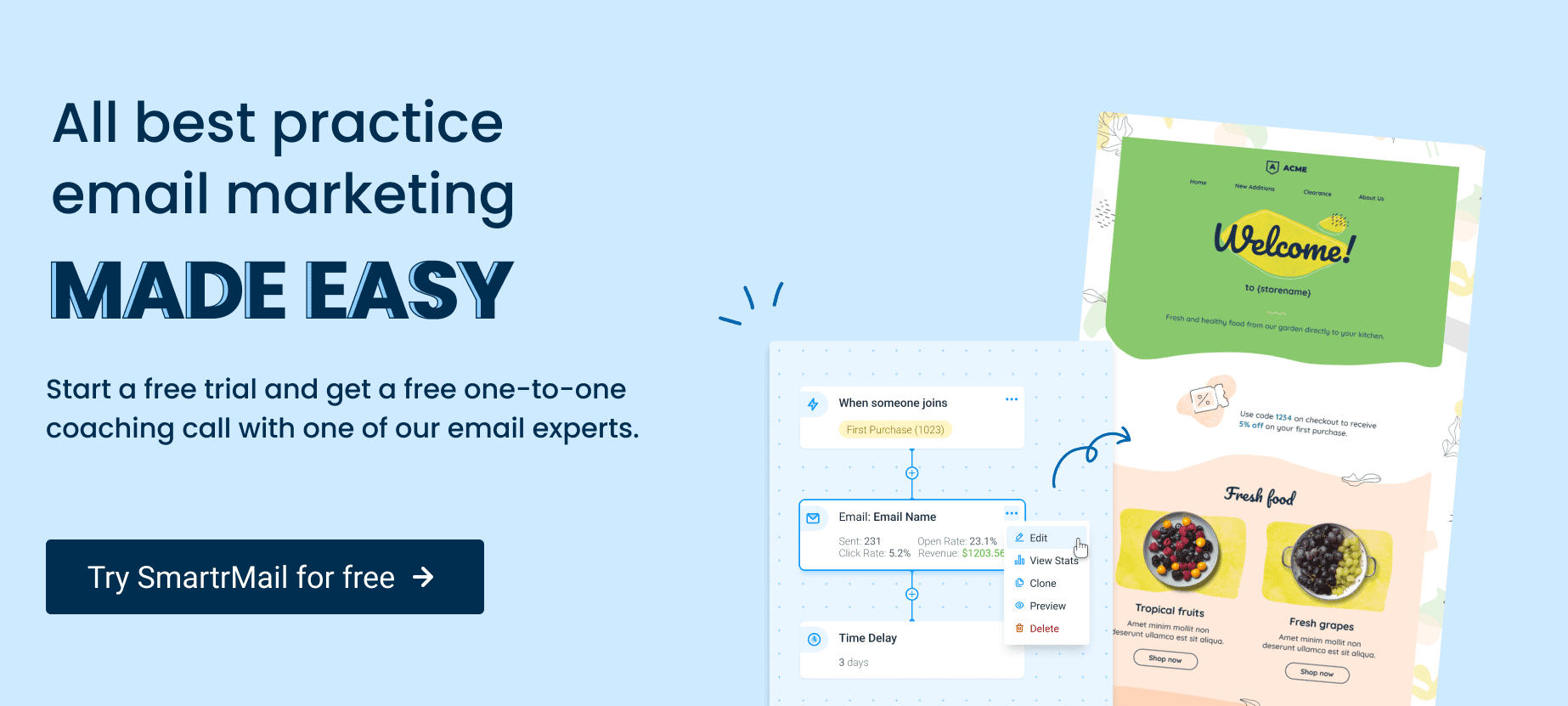
Thank you for your purchase email
Whether you double this up as your order confirmation email or send it on its own, your goal here is simple: thank your new customer for their purchase.
For such a small gesture, simply saying thank you goes a long way to increasing customer satisfaction and fostering loyalty.
It’s also an opportunity to introduce your new customers to your brand and story.
For example, you could share your founder’s story of how the brand got started and the inspiration behind it. Or you could share your brand’s ethos such as its commitment to quality and customer service.
The example below from Huckerry is pretty text heavy (certainly don’t feel like you have to match its length) but does this well.
You’ll also want to include a call-to-action (CTA) in this email (as you should in pretty much every email you send).
Depending on your brand and how hard you go after sales, this could be a CTA directing people to make their all-important second purchase. Otherwise, if you don’t think being this aggressive would work with your audience, you could simply invite them to check out your latest products.
Follow us on social media email
First-time customers make for great social followers. Getting them to follow your social accounts also increases the chances they’ll become repeat-customers.
And you can invite them to follow your brand with a post-purchase email. Fruit of the Loom does this well.
You don’t have to tie this email to the product they purchased, but sending this as part of your post-purchase campaign is the perfect time as your new customers are still engaged with your brand.
Check out our guide here on social media follow email tips to master this email.
Get Started on your Post Purchase Emails with SmartrMail today
? Install SmartrMail and Automate your Post Purchase Emails ?
Product education emails
Educating people on how to use your product is a great idea. After all, if they’re not using it properly, they’re not getting the full benefit making it less likely they’ll become repeat customers.
So if you have a product that requires some setting up, then sending this kind of email just before your customer’s shipment is due to arrive is a great way to show your appreciation and boost customer engagement.
The email below from Allergy Buyers Club is a great example of this in action.
Customer loyalty program email
Customer loyalty programs are a great way to generate repeat purchases and naturally help convert one-time customers into repeat customers. That’s if they know about your program.
Do can do this with an email like what Romper sent their customers below.
The good this about this particular email is that it doesn’t lead with ‘join our loyalty program,’ instead it leads with the benefits and value of being a member. This then leads naturally into the CTA to sign up to become a member.
So if you have a program set up, you’ll definitely want to invite people to join it as part of your post-purchase campaign if they haven’t joined already.
Cross-sell email
Cross-selling is the process of offering a customer additional products that complement what they have bought.
For example, recommending leather shoe cleaner to someone who’s just purchased a brand new pair of leather shoes.
This is cross-selling and it’s key to generating repeat purchases by making customers aware of other great products you sell.
Example of a cross-sell email
The great thing about this post-purchase email is that it works pretty much regardless of what you sell. As long as you sell more than one product, chances are you’ll be able to set up some cross-sells.
Check out our guide on cross-selling with email marketing to dive into this area.
Replenishment email
This one’s very much dependent on what kind of products you sell. It’s also one of the surest ways to generate repeat purchases.
It’s all about following up customers who’ve purchased a product that’ll need to be refilled, replaced or reordered. Typical examples include pet food, shampoo, coffee, etc.
But it doesn’t have to be strictly perishable items that people buy at regular intervals. Kitchen utensils, auto parts, shoes, etc. all wear down over time and will need to be replaced.
The trick is to time this email to when your customers are looking to reorder and then provide a clear CTA to purchase the product again.
You don’t want to clutter your email with too much. Just compare the two examples below.
Which email do you think works better? Which one makes it easy to reorder? Definitely the one on the right with its clear CTA.
Second-time customers
If you’ve put together your initial post-purchase flow for first-time customers well, you’ll quickly find they transition into repeat purchasers fairly seamlessly.
That’s great! You’re now generating additional sales and profit much more easily than consistently trying to acquire new customers.
But the goal is to transform them into long-term loyal customers.
Customers who have purchased twice are much more likely to reach this goal than first-time customers, but you don’t want to take your foot off the pedal.
Instead, targeting second-time customers with another post-purchase flow tailored to them will help seal the deal.
Thank you for your purchase email
Just like with their first purchase, you’ll want to follow up the second purchase with another thank you email. But you don’t want it to be a carbon copy of the first.
This time it can be less about introducing people to your brand and more about securing their engagement for the long term.
If you have a subscription service or program, this is a great opportunity to showcase it. One way to do this is by highlighting the savings of being a subscriber versus manually purchasing over and over.
Subscriptions are also fantastic at generating reliable, repeat purchases. So if you don’t have one already set up, it’s something to consider.
If you’re looking for inspiration, Dollar Shave Club does subscriptions extremely well.
An example of a subscription email from Dollar Shave Club
Another idea for this second thank you email is to include a simple offer as a way of showing gratitude for them becoming a loyal customer and, of course, to incentivize another repeat purchase.
Review request email
This is the first big deviation from your first post-purchase email flow – the review request email.
If a customer has purchased from your store a second time, it’s a pretty safe bet they’re satisfied with your products and the customer experience. So why not make the most of that fact and ask them for a review?
We’ve already written a detailed guide on generating customer reviews, but in short, you need positive reviews to act as social proof to increase your overall conversion rates and boost sales.
True, may not directly help with converting second-time purchasers into long-term loyal customers, but you could potentially add a coupon as an incentive to leave a review like in the example below.
Because you’re essentially offering your customer the coupon in exchange for them doing something for you (leaving the review), it won’t come across as overly salesy. But importantly it’ll still incentivize another repeat purchase.
Replenishment email
If your products lend themselves to being part of a replenishment campaign, this is a type of email you should be including in all your post-purchase email flows.
Sale/offer email
If the emails above in your second post-purchase flow don’t do the trick and the customer isn’t making another purchase, it’s time to pull out the big guns.
At this point, your customer is essentially in limbo in a ‘no man’s land’. If you leave it too long, chances are they’ll simply drop off and disappear.
So now’s the time to be direct with a sale or offer email.
How you construct this email will depend on your store, what products you sell and what kind of offers you usually provide. It could be a simple flat percentage off discount, free shipping, or something more creative like buy one get one free.
Whatever offer you go with, make sure it’s enticing.
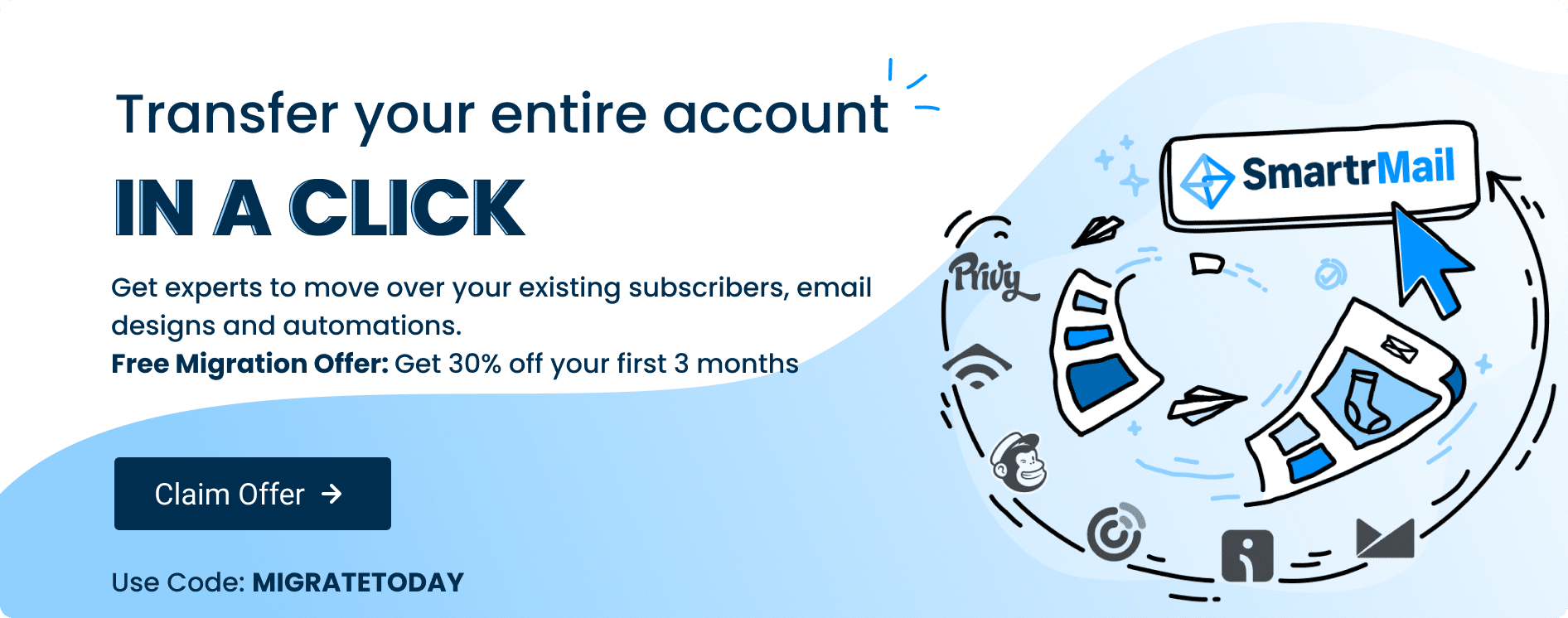
Third-time customers
Gotten your customer to make a second repeat purchase? Congratulations! They’re now what you can reasonably call a long-term loyal customer.
Your goal here is to keep them engaged with regular email marketing and newsletters. This also means sending them what has now become their default post-purchase email flow.
No more follow us on social media or review request emails.
From now on, your post-purchase campaigns should consist of simply an order confirmation email and product-specific emails.
In other words, if they purchased a new laptop, it’s still definitely worthwhile sending them a cross-sell email with cases and other laptop accessories. Product education content is still great to include depending on the product and if it’s perishable, replenishment emails are still great at generating sales and keeping customers active.
Unfortunately, even with the best post-purchase follow-ups and regular email marketing, some customers will still go cold over time. That’s why we have winback emails.
Winback email
Winback emails do what it says on the box – win back customers who have gone cold and stop purchasing from your store.
When done well, they target customers just as they lose interest in your store and entice them to come back and make another purchase.
An example of a typical winback email
Having a winback email automated for your customers will go a long way to keeping customers engaged and generating repeat purchases.
Time to start generating sales with post-purchase emails
That’s it! You now know how the top ecom brands generate millions in profit through repeat purchases instead of just focusing on acquiring new customers all the time.
The only thing left is to start setting these post-purchase email flows up for your store.
Looking for some help? While we’ve made it easy to set up these automations with SmartrMail, we also realize how busy running an ecom store is.
That’s why our Customer Success Team is available to guide you through the setup process and answer any questions you have. We also offer assisted migrations to help you move across with zero hassle.

